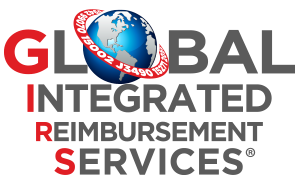Novitas Solutions Inc., the Medicare Administrator Contract (MAC) A and B contractor for regions J-H and J-L on 06/25/2020 revised the Local Coverage Determination (LCD): Magnetic Resonance Angiography (MRA) (L34865) and the associated Local Coverage Article (LCA) (MRA)(A56805).
A magnetic resonance imaging (MRI) shows the differences between various types of tissue based on magnetic properties without using the more harmful radiation of x-rays. Magnetic resonance angiography (MRA) is a non-invasive diagnostic test that is an application of MRI. The amount of energy released from tissues exposed to a strong magnetic field is analyzed when doing an MRA to provide images of normal and diseased blood vessels as well as visualization and quantification of blood flow through these vessels.
There is a National Coverage Determination (NCD) for MRI and MRA documented in CMS Publication 100-03, Medicare National Coverage Determinations (NCD) Manual, Chapter 1, Part 4, Section 220.2 Magnetic Resonance Imaging (MRI) for coverage details.
The LCD and LCA for MRA are governed by and implement the changes in the NCD for MRI and MRA.
COVERED INDICATIONS
Head and Neck Indications
The covered indications include head and neck where the MRA may verify the results of another study. However, it is not considered medically reasonable and necessary for screening asymptomatic patients for intracranial aneurysms.
Peripheral arteries of lower extremities
Effective April 15, 2003, studies have proven that MRA is effective for evaluating flow in internal carotid vessels of the head and neck. However, the NCD has further details and guidelines on the use of MRA in the peripheral arteries of the lower extremities.
The criteria for coverage and non coverage of MRA for abdomen and pelvis and for chest indications are also provided and tracked in the NCD and the LCD.
It is important to note that CMS also encourages contractors to monitor the use of these tests and, where indicated, require evidence of the need to perform both MRA and CA.
For consideration of services performed outside of the reasonable and necessary requirements in this LCD, the redetermination process can be done.
Documentation Requirements
Normal documentation guidelines need to be followed for coverage and payment of services including:
- The patient’s medical record needs to have all documentation that can be requested by the contractor.
- The information includes appropriate patient identification information (e.g., complete name, dates of service[s]), patient signature, signature of the physician or non-physician practitioner responsible for and providing the care to the patient all need to be clear.
- The medical necessity of the services need to be documented.
- When multiple diagnostic services are medically necessary, there must be documentation to support this need.
Review the LCD for other key documentation guidelines to ensure coverage and payment.
Main LCD and LCA Changes:
The LCD was revised on 06/25/2020 effective for dates of service on and after 07/01/2020 to remove the ‘Non-Covered Indications’ section indicating MRA of the spinal canal and contents and MRA of the upper extremities are considered not medically reasonable and necessary at this time. In addition, the LCA that has the diagnosis codes and the procedure codes was updated to remove Group 5 Table of Non-Covered CPT/HCPCS Codes and the language pertaining to these codes.
Please contact your MAC to understand the criteria for coverage, non coverage, and the changes in the LCD and LCA.
Why is it important to track policy changes?
- The billing and documentation guidelines for your Product and associated procedures are presented in the LCDs and the associated Articles and tracking their changes will help you assess billing, coding, or coverage impact on your Products.
- Providers rely heavily on payer policies for billing guidelines and coverage.
- Providers need to be educated on the documentation guidelines to reduce delays in payment.
- It helps to track competitor Products entering the market as competitor products and their coding and billing guidelines are mentioned in coverage policies.
- Understanding the NCD coverage guidelines and following them will prevent audits of the accounts.
Why Partner with GIRS?
We have extensive experience in the United States and globally for diagnostic reimbursement work. GIRS has done the maximum number of point-of-care diagnostics reimbursement work including molecular diagnostics. We also have assisted in reviewing NCDs, commenting, and developing strategies to reverse national non coverage for a range of technologies. Our work has enabled our clients and their accounts to
- analyze the impact of payer policy changes for our clients’ Products;
- submit and follow up on redeterminations;
- submit evidence of the medical necessity by communicating payer needs with the providers;
- comment on policy changes on time;
- correct mistakes in payer policies;
- clarify policy language for accounts;
- educate the sales force and accounts in new payer policy language;
- overturn negative coverage decisions;
- lay the foundation of customized payer advocacy strategies based on policy changes.
Sources:
Please contact us at info@girsinc.com if you need reimbursement services or avail of our Complimentary Review of your reimbursement needs at girsinc.com
Disclaimer: The information in this blog is based on payer information which is dynamic. It is accurate at the time of posting but should not be construed to be reimbursement or legal advice. CPT® is the trademark of the American Medical Association (AMA).
About GIRS
For more than 17 years, GIRS has been assisting medical technology manufacturers with their market uptake and reimbursement strategies so that patients can have access to the care that they need. To implement successful market access strategies, the GIRS Value Discovery Landscape Assessments® team and the Payer Advocacy Compass® team work together to develop and implement foundation reimbursement landscape and payer advocacy strategies to obtain positive coverage, appropriate payment, and innovative payer contracting arrangements to improve market uptake. For more information, email us at info@girsinc.com or call us at 901-834-9119.

